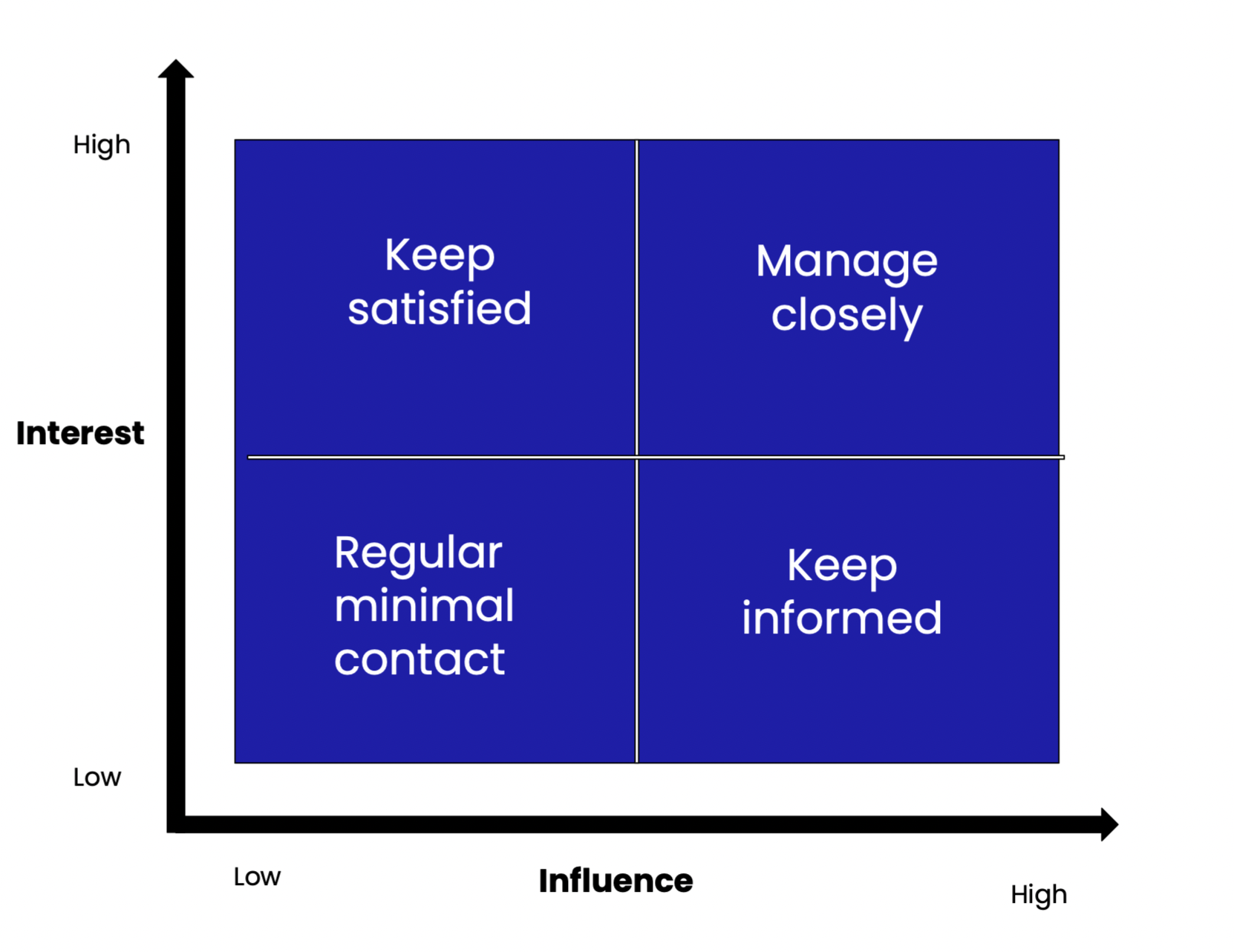What is a stakeholder communication plan?
A stakeholder communication plan is a strategic document outlining how a company will communicate with its stakeholders.
When we say stakeholders, we’re talking about anyone with an interest in the company. This could include anyone from employees to customers, suppliers, partners, and investors.
A good stakeholder communication plan identifies:
- The stakeholders (who they are)
- The information the stakeholders require
- Most effective methods and channels for communication
- How often these communications should occur
The main purpose is to identify your audience's needs and tailor your messages to meet these needs effectively. Doing so helps keep all relevant parties informed, engaged, and open to providing feedback.
As a finance professional, your role in developing and executing this plan is crucial for aligning stakeholder expectations with your company’s financial strategies and performance, ensuring a cohesive path to success and sustainability.

How to create a stakeholder communication plan in 5 steps
Having a solid stakeholder communication plan is a must, especially in the finance world.
Skipping on a custom strategy?
That's a fast track to wasted time and effort. Plus, without clear communication and input from those who matter (think employees, clients, investors, and partners), your projects might just miss the mark, affecting both your budget and deadlines.
The solution?
Adopt a systematic approach to keep communication flowing both ways. This way, you're not just talking; you're building understanding and support.
So, let's dive into creating a stakeholder communication plan that not only supports your fundraising efforts but also clarifies requirements and brings everyone on board with your vision.
1. Identify your stakeholders (internal & external)
First, make a list of everyone who has a "stake" in your company. These are the people who you’ll communicate with, so think about anyone who has an interest in the project or who’ll be influenced by it.
Your stakeholder list will include names to divide into two categories: internal stakeholders (such as employees and executives) and external stakeholders (including investors, customers, partners, and regulators).
To help tailor your communication/messages to the stakeholders’ needs, try using a stakeholder map. This will let you visually organize stakeholders based on their level of interest in and influence over your projects or company.
Here’s a basic example of what your stakeholder map might look like:

And here’s how you can make it work:
Create the stakeholder map: Draw a grid with two axes—interest and influence. Interest on one axis measures how much stakeholders care about your project, while influence on the other axis gauges their power to affect it.
Position your stakeholders: Place each stakeholder (or stakeholder group) on the grid according to their interest in and influence over your project. Doing this will help you clearly see who the key players are and who will need more engagement.
Strategize communication: Use the insights from your stakeholder map to craft tailored communication strategies. Stakeholders with high interest and high influence need frequent and detailed updates, while those with less interest and influence might require only periodic summaries.
Remember to add new stakeholders as/when they come into the scene. For this, you’ll need to come up with a process to help you keep the list updated.
2. Clarify your objectives
Next, define exactly what you want to achieve through communication with each stakeholder group.
Ask yourself, "What's the goal here?" It could be anything from rallying support for a new project to keeping everyone in the loop on financial performance.
More focused objectives help to make sure your messages hit the mark. Try to be clear about what info you need to provide and what feedback would be useful to obtain.

3. Select your communication methods
Not everyone likes their news the same way. Some prefer emails while others are all about quick meetings or updates via project management tools, etc. Pick the communication methods that work best for your stakeholders to keep everyone informed and engaged.
The methods you choose might be based on preferences, demographics, goals, or resources.
Some methods to consider include:
- Regular progress reports
- Email or online chat rooms
- Presentations
- Digital newsletters
- Informal individual contacts
- Online communities
4. Create your stakeholder communication plan
Now that you have all your information, it’s time to pull it all together. Start by laying out a schedule on a calendar and identify how often updates need to happen (such as daily, weekly, monthly, quarterly, yearly, or on an ad-hoc basis).
Assign clear responsibilities within your team for each communication task, ensuring everyone knows their specific duties. This includes who communicates what, to whom, and how often.
Lastly, plan for feedback collection to gauge the effectiveness of your communications. This step is crucial for adjusting and improving your strategy over time.
By streamlining this process, you create a focused and efficient approach to stakeholder communication, enhancing transparency and engagement with minimal fuss.
5. Monitor your communication plan (and assign a communication plan owner)
Your stakeholder communication plan isn’t a "set it and forget it" deal. You’ll need to pick someone to oversee monitoring channels for usage metrics, feedback incorporation, and updating of contacts or formats if needed.
Have teams provide input on what is/isn't working. Review the plan itself annually for needed revisions as stakeholder relationships or business needs change.
By following these steps, you're not just talking to your stakeholders; you're engaging them in a meaningful way that supports your company's goals and keeps everyone moving forward together.
FAQs: Stakeholder communication plans
How do you effectively engage with stakeholders?
To engage with stakeholders, you must listen to their concerns, provide timely and relevant information, and involve them in decision-making processes.
How do you write a stakeholder plan?
You can make a stakeholder plan by identifying stakeholders, understanding their needs and interests, defining engagement goals, outlining engagement strategies, and establishing metrics for success.
Why do we build relationships with stakeholders?
It’s important to build relationships with stakeholders because it helps to ensure mutual understanding, support project goals, manage expectations, and foster collaboration and trust.
How do you build relationships with stakeholders?
Through consistent, open, and transparent communication, and by demonstrating reliability and trustworthiness in all interactions.
What is the most important aspect of a relationship with a stakeholder?
Trust is the cornerstone, as it underpins effective communication, collaboration, and the ability to navigate challenges together.





